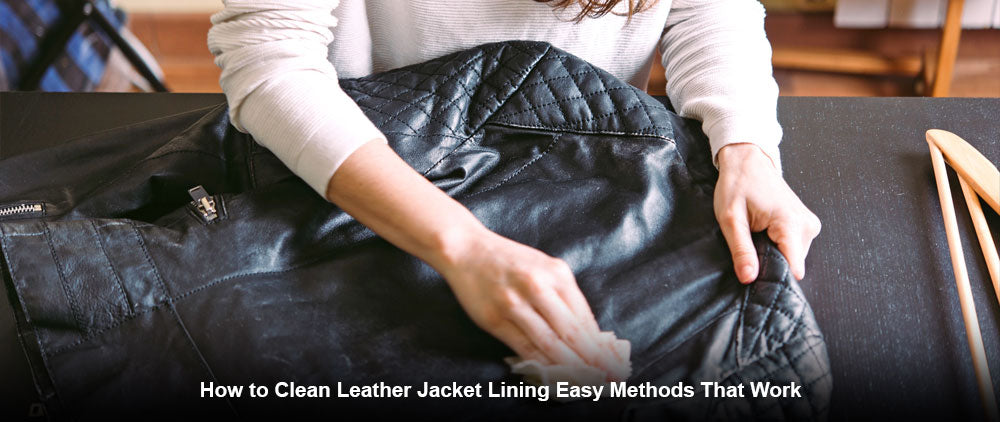Hand-wash or use a gentle machine cycle to remove dirt and odors from jacket liners safely.
I have spent years caring for outerwear and fabrics, so I know exactly how to clean jacket liners without ruining the shell or insulation. This guide walks you step-by-step through how to clean jacket liners for different materials, stains, and care labels. You will find practical tips, mistakes to avoid, and simple routines you can use today to keep liners fresh and long-lasting.

Why cleaning jacket liners matters
Keeping liners clean improves comfort and extends the life of your jacket. Dirt, sweat, and body oils break down fabrics over time. Odors build up in liners faster than in outer shells. Regular care avoids heavy, hard-to-remove grime. Learning how to clean jacket liners saves you money and keeps jackets performing well.

Read care labels and choose the right method
Always read the care label before you decide how to clean jacket liners. Labels tell you if a liner is machine-washable, hand-wash only, or dry-clean only. Follow temperature and detergent instructions. If the label is missing, test a small hidden area first. Knowing the label rules helps you avoid costly mistakes when learning how to clean jacket liners.

Common liner materials and how to treat each
Different liners need different care. Match the method to the material.
- Polyester and nylon — Machine-wash gentle or hand-wash with mild detergent. These fabrics are durable and rinse easily.
- Fleece — Use cold water and gentle detergent. Avoid fabric softener to keep loft.
- Quilted synthetic insulation — Wash gently and tumble dry low with dryer balls to restore loft.
- Silk or satin — Hand-wash or dry-clean only. Use mild detergent and cold water.
- Wool blends — Use a wool-safe detergent and hand-wash or dry-clean based on label.
Understanding the material is central to how to clean jacket liners properly.

Preparing the jacket for cleaning
Take a few prep steps before washing. These steps reduce damage and speed cleaning.
- Empty pockets and remove detachable liners or hoods.
- Close zippers and fasten snaps to prevent snags.
- Brush off loose dirt with a soft brush.
- Spot treat visible stains before full wash.
Proper prep makes how to clean jacket liners faster and safer.

Hand-washing method (best for delicate liners)
Hand-washing is gentle and reliable for many liners.
- Fill a basin with cool or lukewarm water.
- Add a small amount of mild detergent designed for delicates.
- Submerge the liner and gently agitate for 3 to 5 minutes.
- Let it soak for 10 to 15 minutes if heavily soiled.
- Rinse thoroughly in cool water until soap is gone.
- Press out excess water gently without wringing.
Hand-washing is a safe approach when you are unsure how to clean jacket liners.

Machine-washing method (for machine-safe liners)
Machine washing saves time when the label allows it.
- Use a mesh laundry bag for removable liners.
- Choose a gentle or delicate cycle with cold water.
- Use a mild liquid detergent and small load size.
- Avoid bleach and fabric softeners.
- Run an extra rinse cycle to remove all detergent.
Finish by drying carefully to avoid shrinking or clumping. This is a common method to learn how to clean jacket liners efficiently.

Drying tips: restore shape and loft
Drying correctly protects the liner’s feel and insulation.
- Air dry flat or hang on a padded hanger for lightweight liners.
- Tumble dry low with dryer balls for quilted synthetics to restore loft.
- Avoid high heat to prevent melting or shrinkage.
- Smooth seams and reshape while damp to reduce wrinkles.
Good drying practice is essential when you learn how to clean jacket liners.

Stain removal: targeted steps for common marks
Treat stains quickly for best results.
- Oil and grease — Apply a small amount of dish soap and blot gently before washing.
- Sweat and deodorant — Use a paste of baking soda and water on the spot for 10 minutes, then wash.
- Food and drink — Blot excess, apply mild detergent, then launder per care label.
- Ink or dye — Use rubbing alcohol on a cotton swab to lift before washing.
Spot testing is crucial to avoid discoloration while learning how to clean jacket liners.

When to seek professional cleaning
Some liners are best left to pros.
- Labeled dry-clean only.
- Liners with glued-in insulation or fancy trims.
- Persistent odors after home cleaning.
Professional cleaning protects delicate construction. Knowing when to seek help is part of how to clean jacket liners responsibly.
Preventative care and maintenance
Small habits prevent heavy cleaning jobs later.
- Air jackets after use to reduce odors.
- Use a removable liner you can wash more often.
- Store jackets in a cool, dry place on wide hangers.
- Clean spot stains promptly.
These steps reduce how often you must deep-clean liners.
Common mistakes to avoid
Avoid these errors to keep liners safe.
- Using hot water on sensitive fabrics.
- Overloading the washer and causing friction.
- Using bleach or strong solvents on colored liners.
- Skipping the care label or a spot test.
Learning from mistakes improves your skill at how to clean jacket liners.
My experience and practical tips
I once washed a beloved jacket without checking the label and lost the liner’s loft. That taught me to always test and to document care steps for each jacket. I now keep a small pouch of mild detergent and a travel lint brush in my cleaning kit. When I show friends how to clean jacket liners, I focus on simple routines and the label rules. These real-world tips save jackets and stress.
Troubleshooting: fixes for common problems
Short fixes for typical issues.
- Shrinkage after wash — Try gentle steam and reshape while damp; next time choose gentler care.
- Clumped insulation — Tumble dry low with dryer balls to redistribute fill.
- Lingering smells — Repeat a cold-water wash with a cup of baking soda or use an odor-specific detergent.
Troubleshooting helps you learn how to clean jacket liners without panic.
Frequently Asked Questions of how to clean jacket liners
How often should I clean jacket liners?
Clean liners every few months with regular use. Wash more often if you sweat heavily or if the liner smells.
Can I machine-wash all jacket liners?
No. Only machine-wash liners labeled as machine-safe. Delicate and dry-clean-only liners need hand-washing or professional care.
Will detergent ruin insulation in a liner?
Harsh detergents can strip coatings and damage insulation. Use a mild, technical-fabric or down-safe detergent when applicable.
How do I remove oil stains from a liner?
Blot excess oil, apply a few drops of dish soap, and gently work it in. Rinse and launder per care instructions.
Is it okay to use fabric softener on a liner?
Avoid fabric softener for most liners. It can reduce moisture-wicking and damage some synthetic fills.
Can I dry a liner in direct sunlight?
Direct sun can fade colors and weaken fibers. Air dry in shade or use low-heat tumble drying for suitable liners.
What if the care label is missing?
Test a small hidden area with mild soap and water. If the fabric reacts fine, proceed with gentle hand-washing or use a professional cleaner.
Conclusion
You now have clear, practical steps on how to clean jacket liners for most materials and situations. Follow care labels, test before major cleaning, and use gentle detergents and proper drying to protect fit and insulation. Start with one jacket today and apply these simple routines to extend its life and comfort. Try a hand-wash on a small liner this week and see how much fresher it feels. Leave a comment with your cleaning question or subscribe for more fabric care tips.




